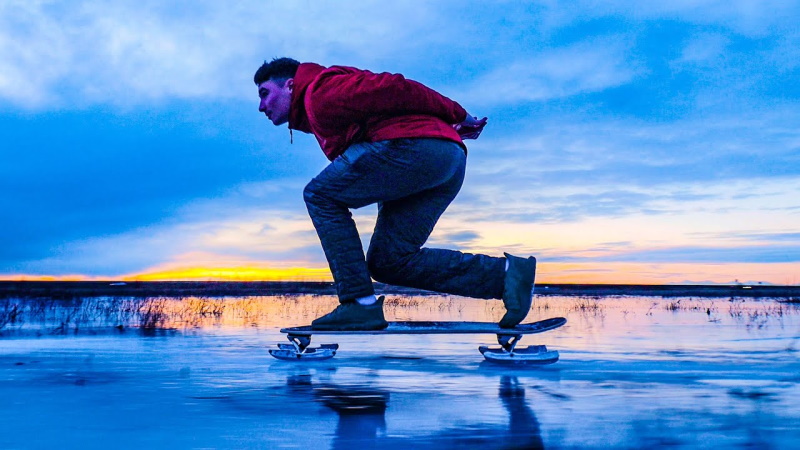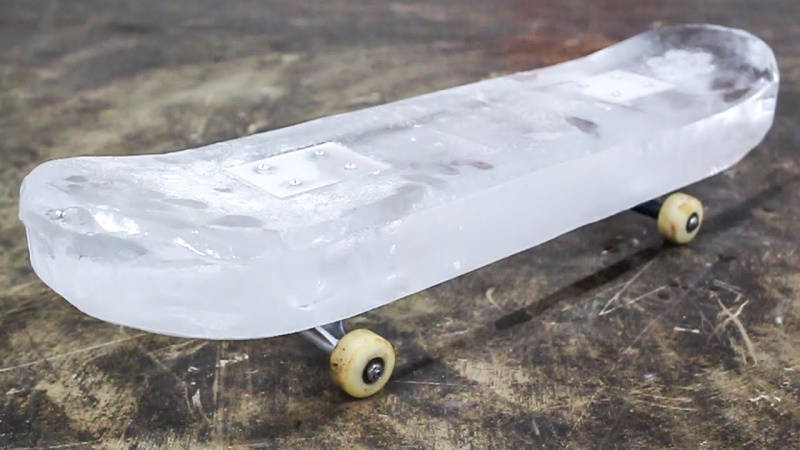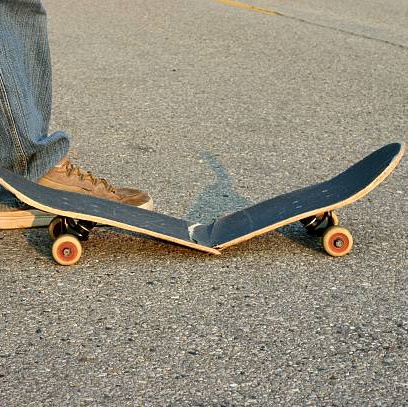How Cold is Too Cold for Skateboarding? (Plus some tips!)
Skateboards are handy sports equipment that can withstand a wide range of temperatures. Depending on the quality of the boards, some can function at high temperatures of 100 - 120 degrees Fahrenheit (37 - 48 degrees Celsius) and low temperatures of 40 - 60 degrees Fahrenheit (4 - 15 degrees Celsius). Just because they can operate at these temperatures, does not mean that it is safe to ride through.
The ability of skateboarders to withstand cold temperatures also needs to be taken into consideration.
So, what temperature is too cold for skateboarding? The ideal temperature for skateboarding ranges from 60 to 90 F (16 to 32 degrees Celsius). When a skateboarder is exposed to the cold, reaction time is slowed down. If the temperature dips below 40 degrees Fahrenheit (4 degrees Celsius), then the effective lubrication of the bearings begins to fail and moisture can get into the deck causing it to warp.
How does cold affect skateboarders?
Although some skateboarders believe that there's no such thing as the temperature being too cold to skate, there are certain limits where it becomes unsafe for the skateboarder on the deck.
Most skateboarders will not like to skate at temperatures below 30 degrees Celsius, so you won't have to worry about going below the limit of your skateboard.
The limit for skateboarders is different from the limit for their boards. However, there are some tips that you can use to have a great session in cold temperatures. We will look at this later.
Indeed, cold weather has several effects on the body which could lead to reduced performance if skateboarders aren't prepared for it.
When you are out in the cold, the blood vessels on the surface of the skin constrict to redirect blood to the core of the body this is called vasoconstriction. It reduces the oxygen level which causes the heart to work harder for blood circulation. This puts extra pressure on the heart and could increase your blood pressure.
Signals from your brain to your muscles are slowed down. This affects your motor response which generally affects your performance.
When skateboarding out in the cold, your body temperature falls faster and you do not sweat as much. When the temperature of your body is below normal body temperature (98.6 degrees Fahrenheit), oxygen in the blood binds more tightly to the hemoglobin protein, which results in less oxygen delivered to the muscle cells.
Also, your respiratory system is affected and you find it difficult to breathe effectively. All this affects your performance.
Hypothermia is one of the biggest reasons why you need to be cautious about skateboarding in the cold. If you take long trips in the cold, you're more likely to experience a life-threatening drop in body temperature. Once your body temperature drops below 95 degrees, you're in serious trouble.
It is worth checking the terrain to ensure that it is dry before embarking on a skateboarding session. While skateboarding in the cold, there is a risk of injury which can result from slippery floors, rails, and coping.
One way to mitigate the effect of the cold is to do 30 30-minute to an hour-long warm-up before embarking on a skateboarding session.
Performing stretches for the first warmup exercise is not advisable as you could end up hurting yourself because when out in the cold, your muscles are stiff.
Instead, you need to perform cardiovascular exercises in the form of light jogging or low-intensity exercises on a stationary bike followed by stretching to achieve the right level of fitness. Performing skateboarding exercises prepares your body for the upcoming session and can improve your performance.
How does cold affect your skateboard?
Skateboards have a wide operating temperature. This means that you can ride them in vastly different environments and terrains without experiencing much impact. This depends of course on the type and brand of the deck.
Most decks can handle normal levels of cold up to 40 degrees Fahrenheit. Leaving a skateboard outside during the winter for 8 hours straight causes the board to get soaked which reduces the adherence of the grip tape to the deck. Moisture can sip into the deck, causing it to warp as a result reducing its lifespan.
Moisture in the bearings also reduces the effectiveness of lubrication. With time, the moisture forms ice which solidifies and expands, spoiling the bearings.
This situation can be solved by removing the bearings from the wheel and cleaning it with acetone. You can learn more about how to clean and replace your skateboard bearings here.
There is also the risk of rusting to your bearings, trucks, and hardware as a result of exposing them to a moist environment.
Most bearings are cheap and can be easily replaced at your local skate shop for $10 - $12.
Ideally, you want to store your skateboard indoors at room temperature.
Fluctuating temperatures tend to affect the skateboard causing it to expand and contract. This causes fatigue and weakens the bonds that keep the board together such as the grip tape, hardware, and bearings. However, moisture tends to affect the skateboard more strongly than temperature changes.
Skateboard decks are made from plies of hard maple wood with straight grains. These woods are hard, rust-resistant, and naturally water-resistant. They are grown in cold weather environments of North America and after treatment can withstand extreme temperatures.
In terms of the performance of the skateboard, really cold temperatures tend to cause the grains of the deck to remain stiff in place, as a result, it becomes brittle. This is not an ideal situation because you want a little flex and movement between the grains when you stand on the board.
This situation reduces the impact strength of the deck. This means that any excessive pressure on the skateboard will cause it to snap. When skateboarding in the cold, you should be careful not to perform complex tricks that require impact such as is usually the case when skating on a ramp.
What temperature is good for skateboarding?
The best temperature for skateboarding is between 60F to 95F (16 to 35 degrees Celcius). Temperatures outside this range are not ideal for normal skateboarding. Temperatures above 95F cause excessive heating which can affect the wheels and temperatures below 60F can affect the bearings.
Most skating videos are shot during the summer when the temperature is ideal.
You naturally want a temperature that is not too hot or too cold. A nice temperature under 24°C is a great temperature. It hasn't rained for 2 to 3 days so everywhere is dry. There is adequate sunlight/visibility so you can see everything. And there is a nice wind blowing so you can lose body heat and have a great session down.
Tips for skateboarding in the cold
- Dress appropriately - Do not leave your skin exposed to cold weather. Wear several layers of clothing to achieve your desired body temperature. Wearing too thin clothes can cause your body heat to dissipate faster which increases your chance of developing hypothermia. The clothes do 2 things, firstly, they draw out sweat by capillary action, and secondly, they prevent your body from losing heat. Put on your helmet, gloves, and socks.
- Warm up before each session - Make sure you warm up for at least 30 minutes to an hour by performing exercises to get your blood flowing. This is very important because it allows your body to store energy and prevents injuries when you fall during skateboarding. Even though it hurts more when you fall in cold weather, warming up before each session reduces the impact.
- Pick the right spot - Picking the right spot for your session is necessary. In the cold, most places tend to get damp, moist, or covered in snow. This presents you with a health hazard that can happen if the environment is slippery. There are several options for skateboarding such as going to an indoor skate park or your garage at home.
- Wear your protective gear - Skateboarding in the cold presents a lot of risks. To avoid injury, you should wear your protective helmet, elbow pads, kneepads, and wrist guards.






